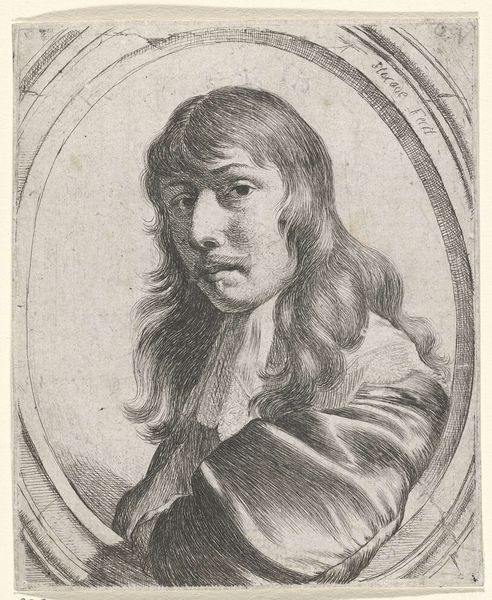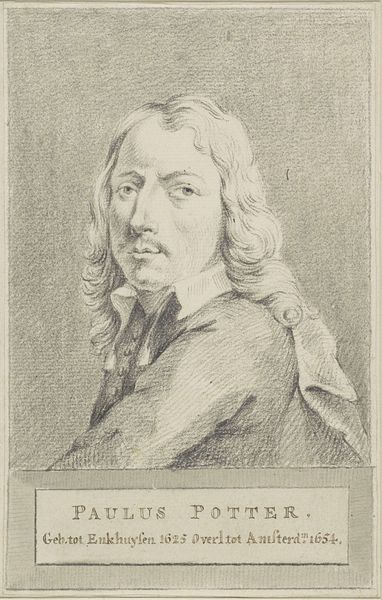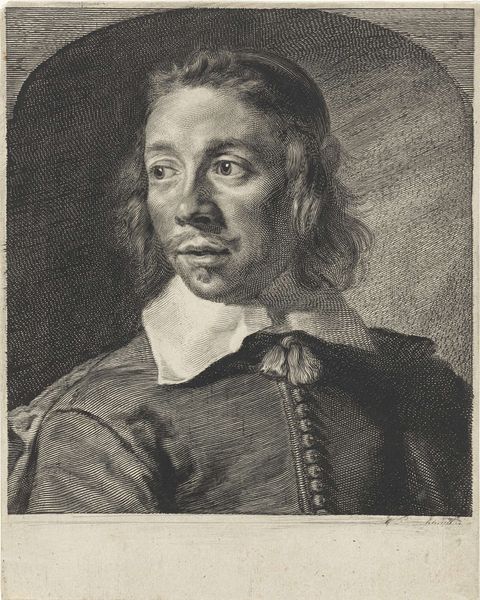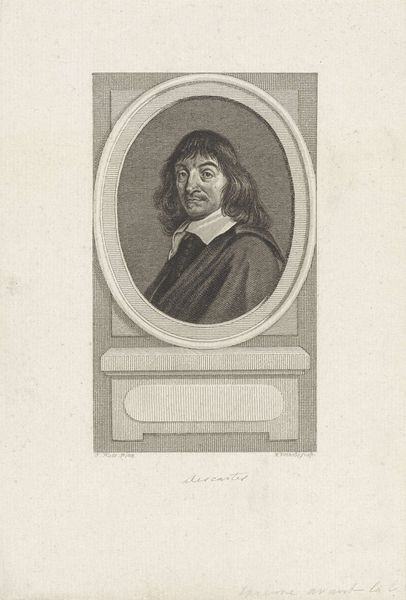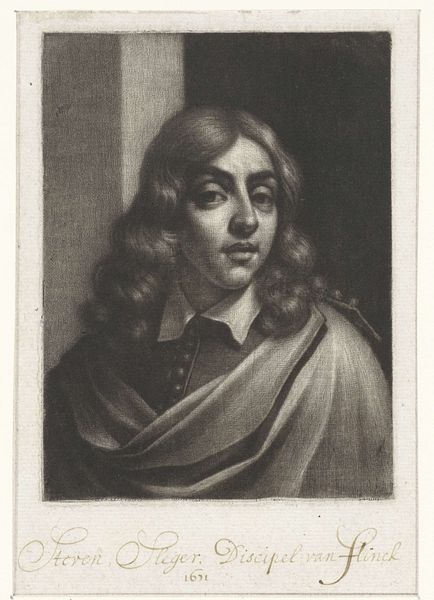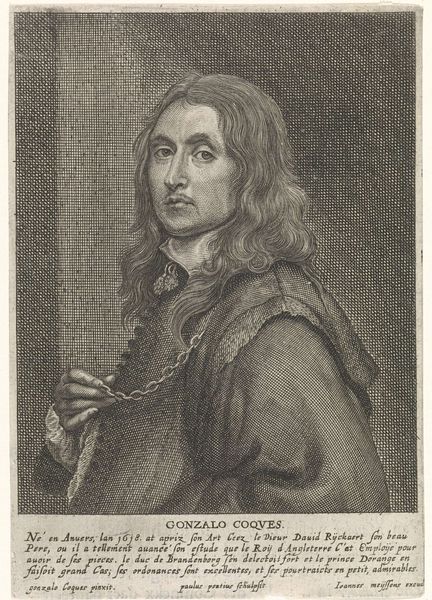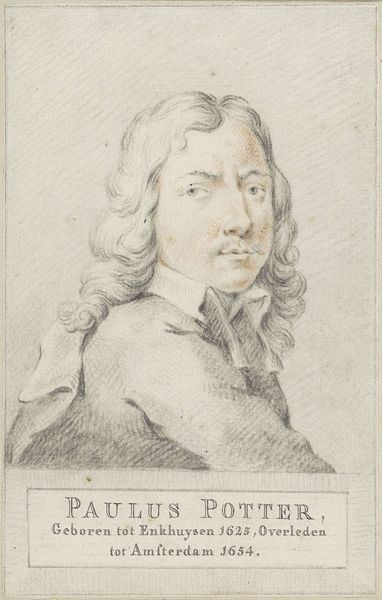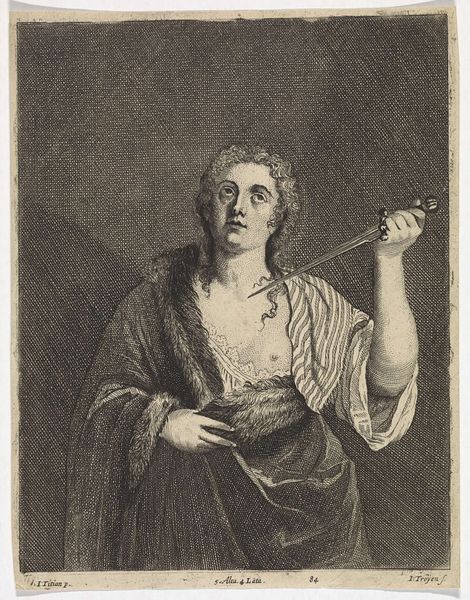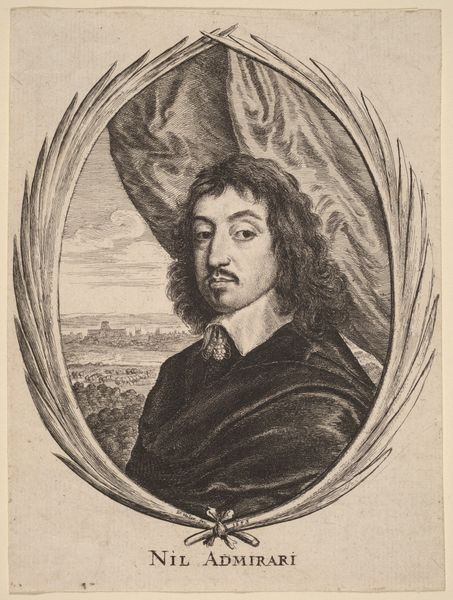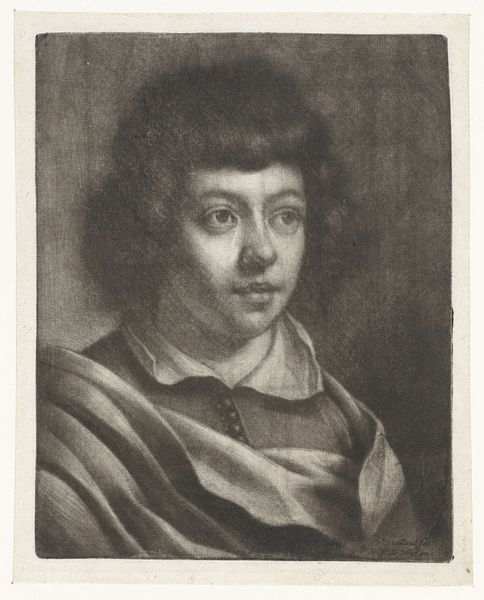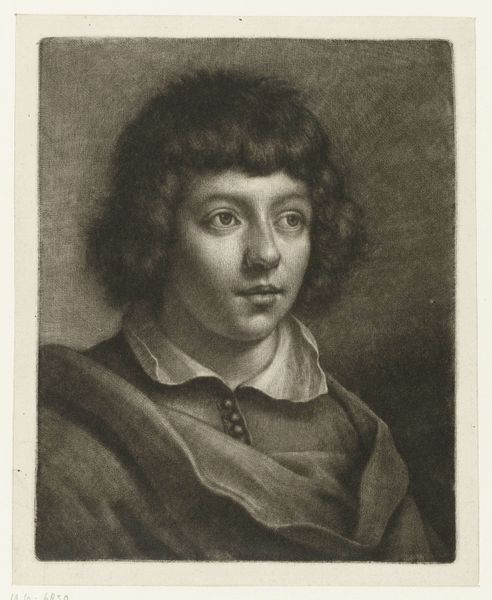
engraving
#
portrait
#
baroque
#
line
#
history-painting
#
engraving
Dimensions: height 170 mm, width 117 mm
Copyright: Rijks Museum: Open Domain
Editor: This engraving, "Matteüs" by Cornelis van Caukercken, after a painting by van Dyck, dates back to the 17th century. It has such an introspective mood…almost melancholy. What stands out to you? Curator: The figure’s pose is key. He holds the halberd not like a weapon, but almost a staff – consider its presence a symbol, laden with meaning. What cultural memory does the halberd evoke in you? Editor: I see power, but also vulnerability, as though the figure's role as defender comes with a heavy burden. How much does cultural context influence that reading? Curator: Massively! Halberds were not just weapons; they were badges of office. It points to civic responsibility – and that responsibility, you see mirrored in his eyes. That specific look informs cultural values, of dedication. Consider other portraits from this time... what are the common virtues emphasized? Editor: Hmm...often wealth or status, rarely this intense feeling of duty or purpose, I guess. The almost unsettling gaze challenges those status markers. Curator: Precisely. It invites us to reflect upon what true strength embodies in an individual, what it demands. His gaze demands a type of reciprocal viewing that isn’t simply a consumption of the subject, it also challenges us. Does he meet your gaze as a witness, or an expectant leader? Editor: I think I came in viewing a straightforward portrait but now I'm seeing the weight of something larger, both the duty to lead and its consequences. Curator: Exactly! Through the symbols presented and his striking vulnerability, Caukercken sparks a broader consideration on leadership and virtue. A worthwhile exchange, don’t you think?
Comments
No comments
Be the first to comment and join the conversation on the ultimate creative platform.
